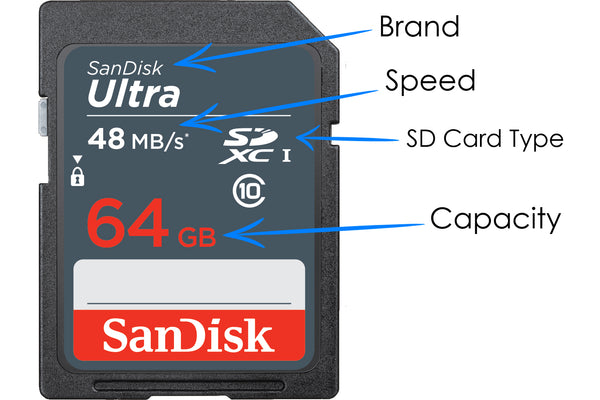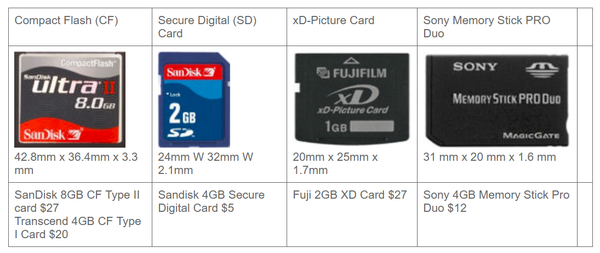Various Memory Card Types - Technological Facts
When most people choose a memory card, they think about pricing, capacity, and compatibility. Some gadgets will only accept memory cards that are a specified size and type. It's critical to read the documentation that comes with your device to verify that you get a memory card that will function with it. In ordinary electronics, such as a digital camera, there are a few different sorts of memory cards. Each of these memory card kinds comes in a variety of sizes and speeds. We'll talk about memory cards a little more today.

Types of Memory Cards:
1. SD (Secure Digital) Memory Cards:
SD cards are by far the most common type of memory card. They are compatible with the majority of digital cameras.
*SD standard – Up to 2GB SD memory card using FAT 12 and 16 file systems
2.SDHC (Secure Digital High Capacity) Memory Cards:
These are SD memory cards but with a higher capacity. Original SD cards only went up to 2GB, so SDHC was invented with a maximum capacity of 32GB. They are identical in shape and size, but they are different media types. Though your camera may fit a SDHC, be careful because if the camera was made before SDHC came along it may not recognise it.
*SDHC standard – over 2GB-32GB SDHC memory card using FAT32 file system
3. xD Picture Memory Cards:
xD Picture cards (standing for ‘eXtreme Digital’) are a Fujifilm format used in some (older) Fuji and Olympus cameras, although these brands are now routinely compatible with more standard SD/SDHC technology.
4. CompactFlash Memory Cards:
CompactFlash (CF) cards offer very high storage capacities and fast processing times. They were first introduced by Sandisk in 1994 and were widely used, but now they are usually only found in the most advanced DSLRs. Last year Canon chose CompactFlash as the recording media for use in its new lineup of professional high definiton (HD) video cameras.
Speeds:
The read and write speeds of a memory card are crucial for two reasons.
The read speed of a card specifies how quickly data can be accessed from it. When transferring card contents to PCs and printers, for example, this performance is noticeable. Images will be transferred to your computer more quickly if the read speed is faster.
Write speed refers to how quickly images can be saved to a card, which is significant when shooting bursts of images in continuous shooting mode, HD video, or high-resolution cameras that produce huge files.
To ensure that the item lasts as long as possible, users must take adequate care of it, just as they would with any other consumer electronic or equipment. You should never put too much pressure on your memory cards, and you should never drop or bend them. When using the correct memory card in a device, it will only fit into the slot one way and will easily glide and click into place. You should never have to put any pressure on the card to make it fit. Memory cards should also be maintained away from electrostatic sources and exposed to bright sunlight or excessive temperature changes.






